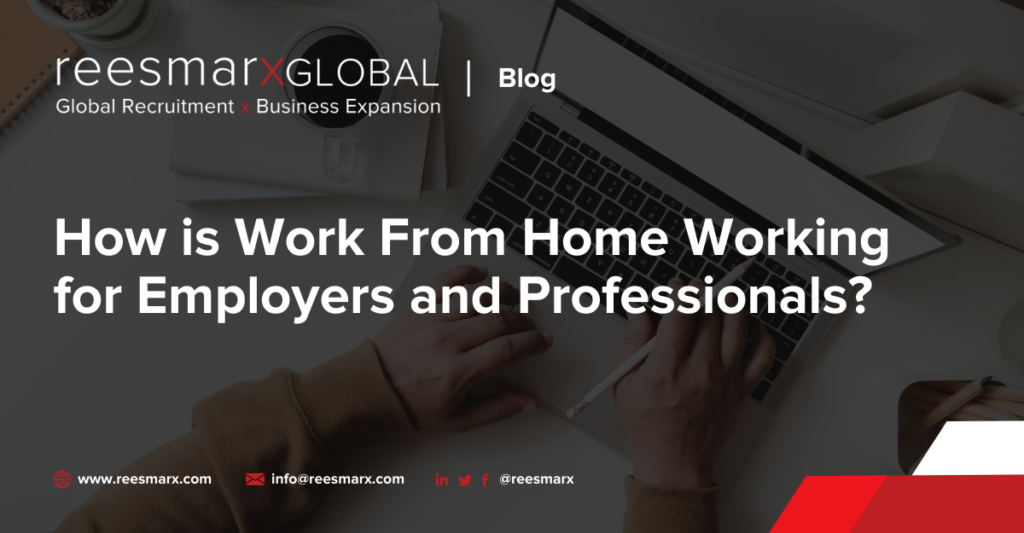Since 2007, there has been a rapid growth of freelance professionals who work from home. Cost of living has been one of the driving factors. An experienced professional could be self-employed in the rapidly growing gig-economy. Having a laptop or a home office became the cultural standard years ago. With little investment, professionals could make the leap.
How many employees want to work from home? Almost all of them! Well, a vast majority of professionals in different service, sales, or creative roles prefer to work from home. According to global telecommuting data collected by Global Workplace Analytics, the majority of employees support the new work model.
Prior to the pandemic there was a growing telecommuting or remote work trend developing. Now, the Covid-19 health emergency has created the largest global business experiment ever. Can businesses mitigate infection risks, retain talent and productivity, downsize commercial expenses by fully embracing the work from home culture?
Key Employee Benefits of Remote Work
To the surprise of many businesses, remote work is actually working. For employees, it means a quiet and focused work environment free of distractions. It also means tremendous cost savings. The expense of transportation or commuting has been eliminated. And other expenses such as vehicle repair and maintenance, as well as daily expenditures for food are also gone.
During an uncertain economy, these cost savings are appreciated. In every country where the Covid-19 virus has increased in infection rates, employees are grateful for the safety accommodation. And for the reduction in work-related expenses that help save them money.
It will be interesting to look at some of the cumulative human resource studies regarding productivity. Will this rush to remote work produce a spike or a decline in employee performance? Feedback so far from many businesses we work with indicates that it is in fact working.
We predict studies will reflect increased morale, employee retention, fewer ‘sick days’ and absences, and other improvements that impact the business bottom line. If a professional is employed full-time and permitted to work from home, they are less likely to seek out a new employment opportunity.
Employers Benefit from Cost Savings
Employers are also benefiting to employees working from home. Did you know that work from home accommodations have grown 173% in the United States since 2005? Remote employment grew 11% faster than the rest of the workforce, and forty-seven (47) times faster than the population of self-employed. The trend was already gaining momentum before the pandemic.
The average cost of leasing commercial business space in the United States is $8.00 to $23.00 per square foot. Large metropolitan areas, however, or cities where tech hubs, for example, are located, can be even more expensive. Think New York or San Francisco in terms of cost. The cost of space per employee can range from just over $4,000 dollars to more than $14,000 per year.
What would happen if 70% or more of a business’ workforce was successfully moved to permanent remote work? Suddenly, instead of large, towering corporate headquarters, businesses could downsize. Provide space for essential in-office workers and functions, data hubs, and more. Downsizing not the size of the labor pool, but the size of commercial space needed. And expense.
The Pandemic Is Extending Temporary Work From Home Measures
Looking back on the timeline of the Covid-19 health crisis, we recall that there was a strong expectation that it would be ‘back to normal’ by now. Before the world learned more about the Covid-19 coronavirus, aspirational statements about the virus disappearing by Spring were common. Then it was expected that it would be “under control” by the Summer of 2020. Some health experts expect the pandemic to persist well through 2021 and into 2022.
Unlike other viruses like SARS or influenza, there are resurgences or second and third waves of the Covid-19 virus. There are no seasonality patterns for the virus. One thing is clear; social distancing helps. And gathering employees in an indoor space is not conducive to keeping people safe.
When crisis management plans are evaluated at the corporate level, the loss is also calculated in terms of human capital. How many experienced employees can you lose to infection? The goal, of course, is to lose none of them. But the recovery period from Covid-19 can be as little as three weeks, or as long as two months. And businesses cannot risk having half-staff or fewer without a loss to productivity and revenues.
The safest place where possible is keeping employees at home. And for employees who have immune-compromised health conditions, it may be negligent for employers to require them to work in a crowded office. Even with prophylactic measures like masks, gloves, and sanitizer.
Recently the second stimulus package in the United States attempted to provide corporate immunity from prosecution for negligence pertaining to employee risk of infection from the Covid-19 virus. Those measures were not passed by the House of Representatives to give American businesses protection from negligence cases. The fear of legal reprisal may encourage more businesses to keep employees working at home, where possible.
Will Remote Work Become a Permanent Shift in the Labor Model?
Companies are already starting to prepare employees for long-term or permanent work from home arrangements. For example, Google provided a one-time opportunity for remote employees to expense up to $1,000 of at-home technology or office gear. It is both a nod to providing employees with a valuable perk in lieu of in-office expensing of lunches and supplies, etc.
The big fear that corporations had whenever considering 80% to 90% remotely situated employees were always productivity-related. In some sectors where employees may also be freelance workers, there was always the fear of using company time for other activities. But with VPNs and software, it is easy to track the activity of an employee. Some software takes screenshots randomly as a check. But most managers keep their remote team responsive in collaboration software like Monday.com or SLACK.
Other organizations have taken a less structured approach to employee scheduling. Some jobs require that employees be present at their desks during specific work hours. Other professional roles, however, do not need to be so structured. Some employees have the freedom to adjust their hours (for instance, to accommodate family or childcare needs). As long as the expected production happens every day, per the defined responsibilities for that employee.
Working from home IS working. That is no surprise to professionals who have worked remotely for their employer for years.Or for freelancers, who have mastered working outside a conventional business office. While many companies may call their teams back into the office eventually, if the pandemic persists (or becomes endemic in certain regions) remote work may become the norm.






